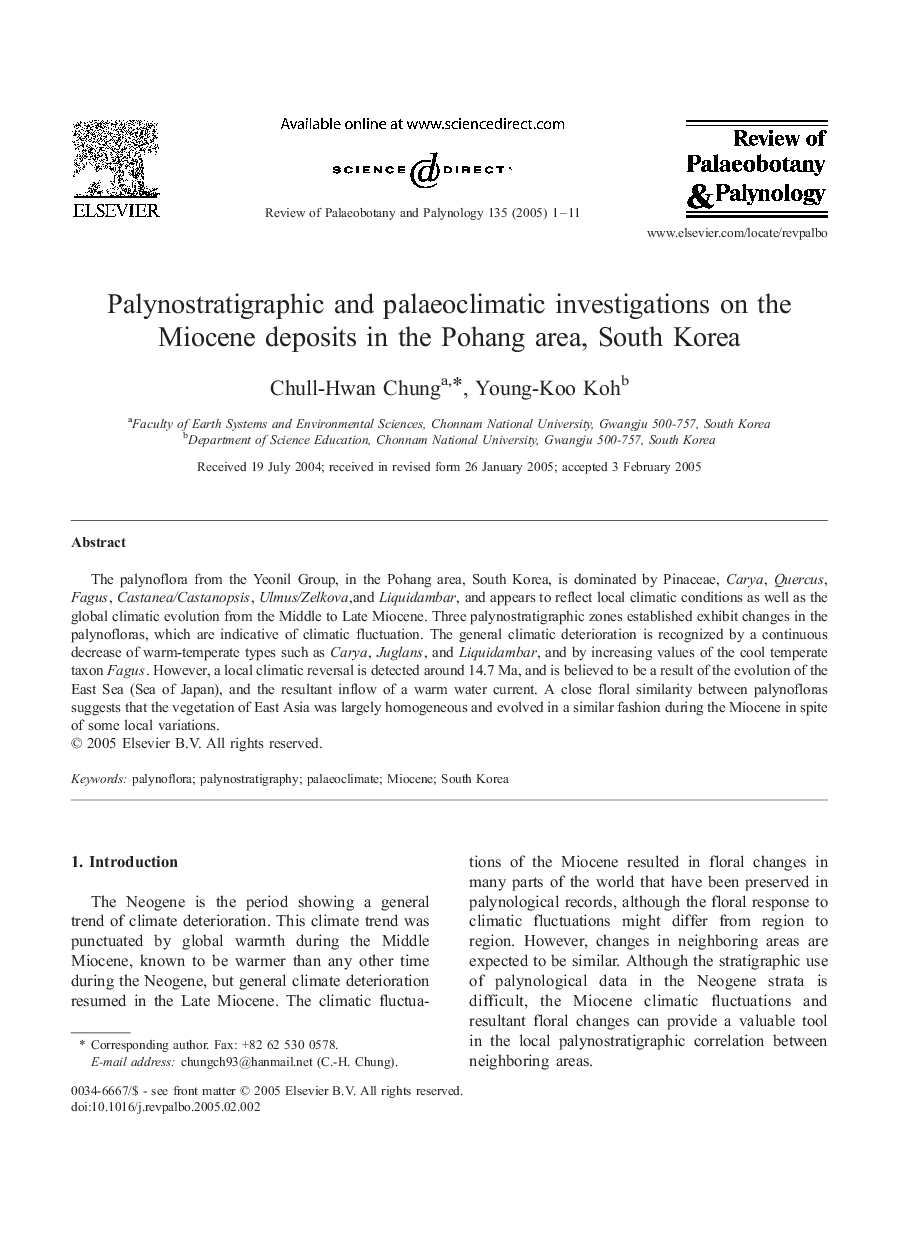| Article ID | Journal | Published Year | Pages | File Type |
|---|---|---|---|---|
| 10122074 | Review of Palaeobotany and Palynology | 2005 | 11 Pages |
Abstract
The palynoflora from the Yeonil Group, in the Pohang area, South Korea, is dominated by Pinaceae, Carya, Quercus, Fagus, Castanea/Castanopsis, Ulmus/Zelkova,and Liquidambar, and appears to reflect local climatic conditions as well as the global climatic evolution from the Middle to Late Miocene. Three palynostratigraphic zones established exhibit changes in the palynofloras, which are indicative of climatic fluctuation. The general climatic deterioration is recognized by a continuous decrease of warm-temperate types such as Carya, Juglans, and Liquidambar, and by increasing values of the cool temperate taxon Fagus. However, a local climatic reversal is detected around 14.7 Ma, and is believed to be a result of the evolution of the East Sea (Sea of Japan), and the resultant inflow of a warm water current. A close floral similarity between palynofloras suggests that the vegetation of East Asia was largely homogeneous and evolved in a similar fashion during the Miocene in spite of some local variations.
Related Topics
Physical Sciences and Engineering
Earth and Planetary Sciences
Palaeontology
Authors
Chull-Hwan Chung, Young-Koo Koh,
